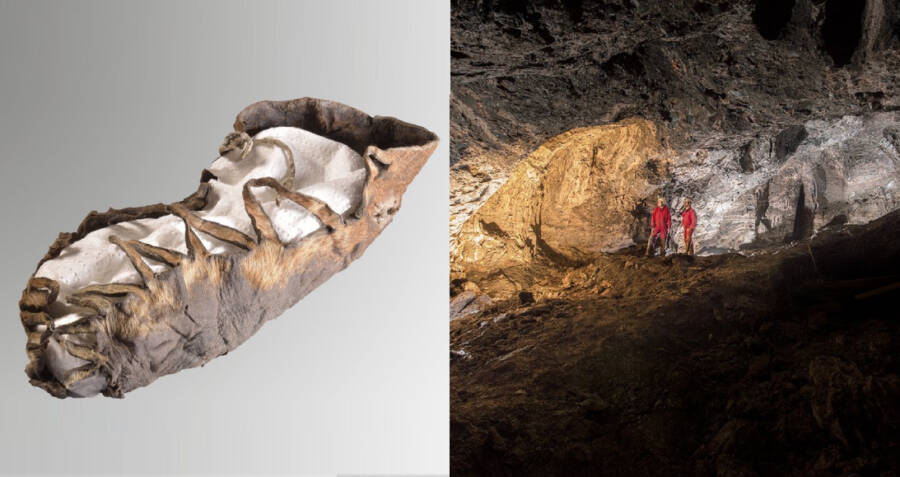Archaeologists excavations in the iron-age salt mine of Dürrnberg, Hallein, Austria, have uncovered remarkably preserved children’s shoes estimated to be 2,000 years old. These leather shoes have endured the test of time, thanks to the preservation within the salt-rich environment.
A Glimpse into Ancient Childhood
The discovery of these ancient leather shoes offers valuable insights into the presence of children in mining areas during that era. The shoes had fasteners made of a type of ramie or linen that still remains on the footwear. Based on the shoe’s design, experts believe it to have been worn by a child from the 2nd century BCE.

Astonishing Preservation
The research team, under the leadership of Prof. Thomas Stöllner from the German Mining Museum Bochum (Deutsches Bergbau-Museum Bochum) and the Museum of Geo-Reenactment Resource Research, expressed astonishment at the excellent condition of the shoes.
Organic materials usually degrade over time, rendering discoveries like these, along with textile remnants and residues as found in Dürrnberg, exceedingly rare. These findings illuminate the lives of Iron Age miners and offer invaluable information for scientific research.
Additional Finds
In the same location where the children’s shoes were discovered, the excavation also unearthed fragments of wooden spades and traces of fur with cords. Researchers believe these remnants are from fur hoods that miners used to keep warm in the chilly underground environment.
Ongoing Research on Salt Mine
Researchers will continue their investigation of the salt mine area for several years. The goal is to achieve a comprehensive understanding of the production and lifestyle of Iron Age miners during that era. This research is anticipated to provide critical insights into aspects of life that cannot be documented or studied through other sources.
Salt Mining Research
Salinen Austria AG and Salinen Tourismus fund the study of prehistoric production in Dürrnberg, Hallein, Austria, in collaboration with the Institute of Archaeological Sciences at Ruhr University Bochum, Germany.
The German Mining Museum Bochum, established in 1930, is one of eight research museums within the Leibniz Association. The museum primarily focuses on the history of extracting, processing, and utilizing Earth’s resources. It contains a research laboratory and a documentation center for mining history.
Expert teams explore archaeometallurgy, mining history, materials science, and mining archaeology. Mineral resources, traces of art, and an underground network extending 1.2 kilometers lie beneath the hard coal layers, allowing a glimpse into the past of Austria and Germany.
The remarkable preservation of these ancient children’s shoes, along with other findings from the salt mines, provides a fascinating glimpse into the lives of Iron Age miners and the unique challenges they encountered. Ongoing research in the area is expected to uncover more insights into this ancient world.
